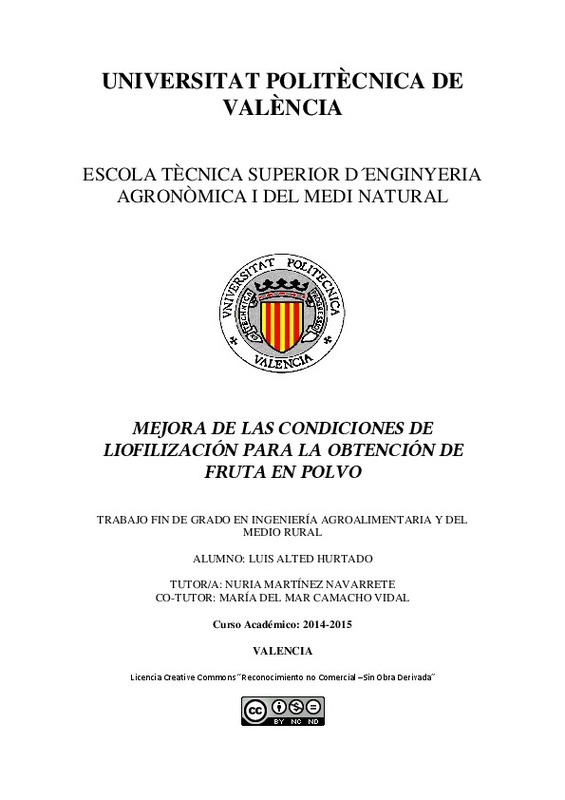JavaScript is disabled for your browser. Some features of this site may not work without it.
Buscar en RiuNet
Listar
Mi cuenta
Estadísticas
Ayuda RiuNet
Admin. UPV
Mejora de las condiciones de liofilización para la obtención de fruta en polvo
Mostrar el registro completo del ítem
Alted Hurtado, L. (2015). Mejora de las condiciones de liofilización para la obtención de fruta en polvo. http://hdl.handle.net/10251/54205.
Por favor, use este identificador para citar o enlazar este ítem: http://hdl.handle.net/10251/54205
Ficheros en el ítem
Metadatos del ítem
| Título: | Mejora de las condiciones de liofilización para la obtención de fruta en polvo | |||
| Autor: | Alted Hurtado, Luis | |||
| Director(es): | ||||
| Entidad UPV: |
|
|||
| Fecha acto/lectura: |
|
|||
| Resumen: |
[ES] La liofilización es una técnica de eliminación de agua que permite la obtención de productos de muy alta calidad. El proceso de secado por liofilización se inicia con una etapa conductiva (secado primario) donde el ...[+]
[EN] Lyophilization is a technique of removing water that allows to obtain very high quality products. The freezedrying process consists in the drying of the frozen product. During freezing most of the water content is ...[+]
|
|||
| Palabras clave: |
|
|||
| Derechos de uso: | Reconocimiento - No comercial - Sin obra derivada (by-nc-nd) | |||
| Editorial: |
|
|||
| Titulación: |
|
|||
| Tipo: |
|
recommendations
Este ítem aparece en la(s) siguiente(s) colección(ones)
-
ETSIAMN - Trabajos académicos [3541]
Escuela Técnica Superior de Ingeniería Agronómica y del Medio Natural







